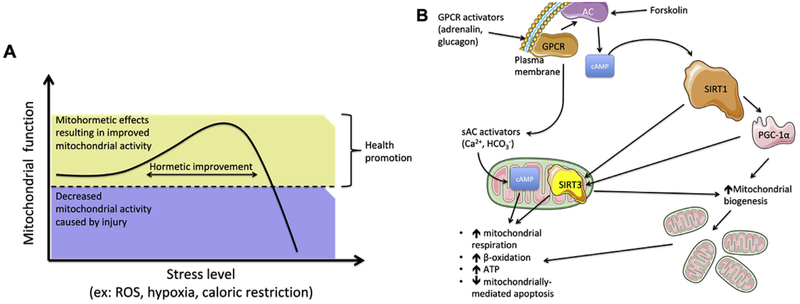Fig. 2.
A. The mitohormetic response. ROS and other mitochondrial toxicants are well known to cause the development of a mitohormetic response, when presented at low values. In fact, a small harmful effect will boost a response of overdrive, i.e., the cell will try to elevate mitochondrial activity to combat the injury, whether by increasing mitochondrial numbers and active respiratory components, to mitophagic (removing the more damaged units) and fission (increasing the number of mitochondria, while diminishing their overall surface area per unit, thus increasing ΔΨ and ATP generation) events. However, this is a tough balancing act to pull through, for the tipping point where activity rapidly decreases can be easily traversed, resulting in the more commonly known toxic effects of ROS and other mitochondrial toxicants. B. The role of cAMP on mitochondrial metabolism and mitohormesis. cAMP signaling affects mitochondrial homeostasis and metabolism, for it can result in an increase in NAD+ and the activation of sirtuin 1 (SIRT1), which deacetylates (and thus hyperactivates) peroxisome proliferator-activated receptor gamma coactivator-1α (PGC-1α), the master regulator of mitochondrial biogenesis, leading to elevated mitochondrial numbers and thus increased overall cellular mitochondrial activity. Similarly, cAMP can lead to the activation of SirT3 within the mitochondrial matrix, leading to the deacetylation of several proteins, resulting in the elevation of mitochondrial activity.

